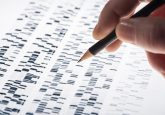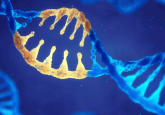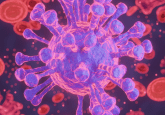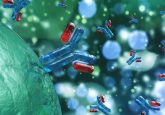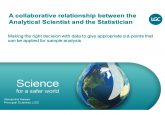Immunogenicity considerations for AAV gene therapy: an interview with Bonnie Wu
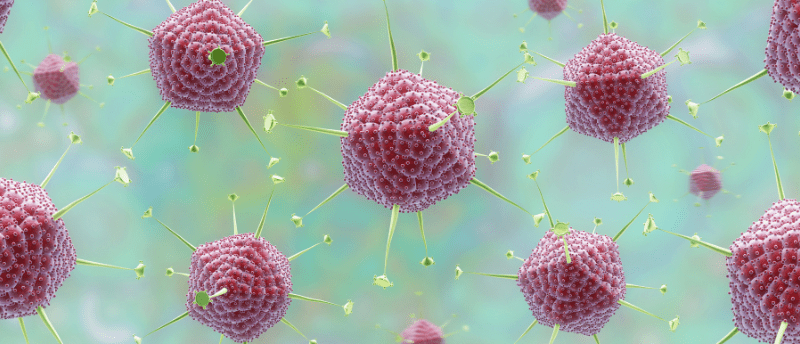
 Bonnie Wu
Bonnie Wu
Associate Scientific Director
Janssen Research & Development (NJ, USA)
Dr. Bonnie Wu is an Associate Scientific Director in the Department of Bioanalytical Sciences at Janssen Research & Development LLC. Bonnie obtained her Ph.D. degree in Biochemistry from the University of Rochester (NY, USA). After her postdoctoral training in gene therapy, she entered the biotech industry, developing innovative methods to support technology development and biomarker studies. Bonnie joined Johnson & Johnson in February 2007, focusing on method development and validation to assess immunogenicity responses to biotherapeutics. She is the reviewer of the AAPS Journal, the Journal of Immunological Methods and Bioanalysis and is a member of the AAPS Immunogenicity Assay Working Group and Immunogenicity for Gene Therapies Discussion Group. Bonnie served in the 2013 – 2015 USP Immunogenicity Testing Expert Panel. She was elected as the Chair of Bioanalytical Track for the 2021 AAPS PharmSci 360 Rapid Fire Programming Committee (RFC) and session chair of the 2022 PEGS Boston Immunogenicity Assessment & Management.
Can you summarize the immunogenicity considerations for AAV gene therapy?
The administration of an adeno-associated viral (AAV) vector for gene therapy can induce a host immune response. The viral components and transgene product would elicit both innate and adaptive immune responses that could impact treatment efficacy and patient safety.
The innate immunity to AAV gene therapy is mediated through viral capsid activating Toll-like receptor 2 (TLR2) or viral nucleic acid content triggering a Toll-like receptor 9 (TLR9) response. These pathways lead to the release of proinflammatory chemokines like TNF-α and IL-6 and the production of IL-1β and IL-18, resulting in inhibition of viral replication and spreading. The innate phase chemokines and cytokines could also prime a T-cell mediated adaptive immune response.
In addition to innate immune response, the introduction of an AAV gene therapy vector is known to induce an adaptive immune response, which includes humoral and cytotoxic T-cell response. The humoral response is associated with the production of pre-existing and treatment-emergent antibodies to viral capsid, as well as an antibody response to transgene products. Both the viral capsid protein and transgene product can also elicit a cytotoxic CD8+ driven T-cell response mediated by MHC Class I and a CD4+ driven T-effector response mediated by MHC Class 2.
How does the risk of immunogenicity affect drug efficacy and patient safety?
The immune response to an AAV gene therapy could impact drug efficacy and patient safety. The pre-existing immunity to vector capsid can prevent effective gene transduction and therapeutic efficacy. Induced or treatment-emergent antibodies against viral capsid would prevent the re-administration of gene therapy vector. In addition, pre-existing or treatment-emergent anti-AAV antibodies can complex with AAV capsids and trigger immune complex formation, antibody-dependent cellular cytotoxicity (ADCC), antibody-dependent cellular phagocytosis (ADCP) or complement-dependent activation (CDC). These events would lead to cell lysis, inflammation or opsonization of viral particles, impacting therapeutic efficacy.
Likewise, antibody response to a transgene product would block its activity, compromising treatment efficacy. When an anti-transgene protein-neutralizing antibody (NAb) cross-reacts with a homologous counterpart, it could potentially lead to immunodeficiency syndrome. If the transgene protein is expressed on the cell surface, anti-transgene protein antibodies could directly bind and mediate effector functions, e.g., ADCC, ADCP or CDC, leading to cell lysis and tissue destruction. The transgene protein can also be presented by Class I MHC on the target cells, activating cytotoxic CD8+T cell response that can be associated with immunotoxicity and loss of transduced cells.
What do the current regulatory guidelines recommend regarding immunogenicity assessment of gene therapy products?
For viral gene therapy, the FDA recommends evaluating subjects in clinical trials for adaptive immune responses against both viral vector and transgene protein in the 2015 regulatory guidance ‘Considerations for the design of early-phase clinical trials of cellular and gene therapy products’. This evaluation may include the assessment of both humoral and cellular responses. If adequate assays are not yet available, baseline and post-treatment samples should be cryopreserved for future evaluation after suitable assays have been developed.
What are your recommendations for selecting appropriate AAV NAb assays for monitoring humoral responses to a therapeutic?
NAb response to the AAV vector is one of the important bioanalytical endpoints for AAV gene therapy. Measurement of pre-existing NAbs enables the selection of animals or patients suitable for enrollment in pre-clinical or clinical studies. NAb data would allow us to evaluate the impact of anti-AAV NAb response on therapeutic efficacy and patient safety.
There are key parameters to consider when selecting a suitable AAV NAb assay. The method should be reliable for the detection of NAb to AAV vector with adequate sensitivity, specificity, precision and reproducibility. It should be amendable to cross-validation at multiple sites and facilitate the development of companion diagnostics when needed.
The AAV NAb assay typically uses a cell-based viral transduction assay to measure the transduction of target cells by an AAV vector carrying a luciferase reporter gene. An alternative assay readout could be transgene expression as measured by qPCR. The procedure for this assay approach is more tedious. In the AAV NAb screening assay, NAb or other non-NAb inhibitory components are detected through the inhibition of viral transduction, resulting in a reduced assay signal. The non-NAb inhibitory components, although detected in baseline samples, are not likely to be classified as NAb in post-treatment samples when a 4-fold higher response than that in the baseline samples is implemented as the cut-off.

